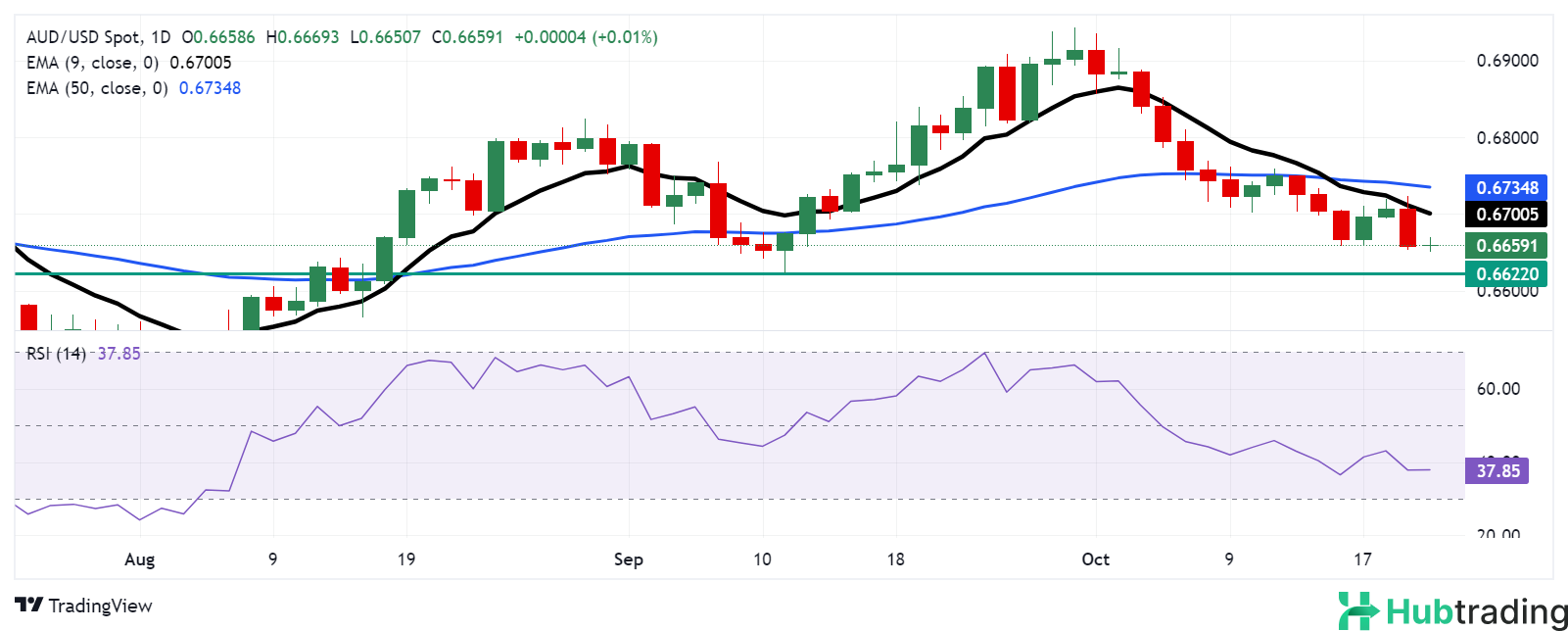• The Australian Dollar strengthens on hawkish sentiment regarding the RBA’s policy outlook.
• The Aussie may encounter headwinds from rising risk aversion, driven by concerns over a potential inflation resurgence in the US.
• US 2-year and 10-year yields are at 4.02% and 4.19%, respectively.
On Tuesday, the Australian Dollar (AUD) regained some ground against the US Dollar (USD), though the AUD/USD pair struggled amid a rise in US Treasury yields, which surged over 2% on Monday. This increase was driven by signs of economic resilience and growing concerns about a potential resurgence of inflation in the US.
The Aussie Dollar found support from hawkish sentiment surrounding the Reserve Bank of Australia’s (RBA) policy outlook, reinforced by strong Australian employment data. Additionally, the AUD benefited from China’s recent interest rate cuts, as China remains Australia’s largest trading partner.
The US Dollar strengthened as recent economic data reduced expectations for a large rate cut by the Federal Reserve (Fed) in November. According to the CME FedWatch Tool, there is an 89.1% chance of a 25-basis-point rate cut in November, with no likelihood of a larger 50-basis-point cut.
Market participants are now awaiting Purchasing Managers Index (PMI) reports from both the US and Australia, scheduled for release on Thursday. These reports may provide insights into the health of both economies and influence future monetary policy decisions.
Daily Market Movers: Australian Dollar Under Pressure Amid Rising Risk Aversion
- US Treasury yields for 2-year and 10-year bonds currently stand at 4.02% and 4.19%, respectively.
- On Monday, Neel Kashkari, President of the Federal Reserve Bank of Minneapolis, stated that the Fed is closely monitoring the US labor market for signs of rapid destabilization. He advised investors to expect a gradual pace of rate cuts in the coming quarters, indicating that any monetary easing will likely be moderate rather than aggressive.
- Mary Daly, President of the Federal Reserve Bank of San Francisco, noted that while she anticipates the Fed to gradually lower interest rates, the central bank remains committed to a data-driven approach.
- During the CBA 2024 Global Markets Conference in Sydney on Monday, RBA Deputy Governor Andrew Hauser expressed mild surprise at the strength of employment growth, highlighting a remarkably high labor participation rate. He emphasized that while the RBA is data-dependent, it is not overly focused on data.
- The People’s Bank of China (PBoC) has cut the 1-year Loan Prime Rate (LPR) to 3.10% from 3.35% and the 5-year LPR to 3.60% from 3.85%, in line with expectations. These lower borrowing costs are expected to stimulate domestic economic activity in China, potentially boosting demand for Australian exports.
- National Australia Bank revised its forecast for the Reserve Bank of Australia (RBA) last week, now predicting the first rate cut in February 2025 instead of May. The bank anticipates gradual cuts, with rates expected to fall to 3.10% by early 2026.
- US Retail Sales increased by 0.4% month-over-month in September, exceeding the 0.1% gain in August and market expectations of a 0.3% increase. Additionally, US Initial Jobless Claims fell by 19,000 in the week ending October 11, marking the largest decline in three months, with total claims dropping to 241,000, well below the anticipated 260,000.
- In Australia, seasonally adjusted Employment Change surged by 64.1K in September, raising total employment to a record 14.52 million, significantly surpassing the market expectation of a 25.0K increase following a revised rise of 42.6K in the previous month. The Unemployment Rate held steady at 4.1% in September, matching the revised figure for August and coming in lower than the anticipated 4.2%
Technical Analysis: AUD/USD Approaches 0.6650, Near Eight-Week Lows
The AUD/USD pair trades near 0.6660 on Tuesday, with technical analysis pointing to a short-term bearish outlook. The pair remains below the nine-day Exponential Moving Average (EMA), and the 14-day Relative Strength Index (RSI) is below 50, indicating continued bearish momentum.
On the downside, the pair could test its eight-week low of 0.6622, last seen on September 11, followed by the key psychological level of 0.6600.
Resistance is expected at the nine-day EMA around 0.6700, with further resistance at the 50-day EMA near 0.6734. A break above these levels could pave the way for a move toward the psychological resistance level of 0.6800.






